Students will observe the artwork and social commentary of artist and muralist Keith Haring then use printmaking materials to create art that conveys a message in a similar style. Recommended for 5th Graders.
Line: the flat path of a dot through space used by artists to control the viewer’s eye movement; a long narrow mark or stroke made on or in a surface. The repetition of lines can create texture, pattern, and gradations of value.
Shape: a two-dimensional (flat) area enclosed by a line.
Contrast: can create variety by showing differences within the elements in an artwork, such as smooth/rough textures, light/dark colors, or thick/thin lines.
Emphasis: where the eye travels to in a work of art. Also described as the focal point, focus or center of interest. It creates variety and is usually unique in size, color, texture or shape.
Pattern: repeated elements in an organized way, creates unity.
Composition: the use of the principles of design to arrange the elements of visual arts to create a piece of artwork; the way individual design elements are combined to express a particular idea.
Symbol: an image that represents something else.
Variety/Unity: Components that make an interesting composition.
Master: In printmaking, the master is the original image that is reprinted. In this lesson it’s the Styrofoam plate. It could also be a stamp, a woodcut, an etching etc.
Keith Haring was a prolific American Pop artist and muralist in the 1980s. He was born in Reading, Pennsylvania on May 4, 1958. He showed an interest in art from a very early age and his family has said all he ever did was draw. He was influenced and inspired by Dr. Seuss and Walt Disney but his father also drew cartoons for a living. After high school, Keith went to school in Pittsburgh for commercial graphic arts. He quickly decided this wasn’t for him and moved to New York. It was in New York that Keith found a thriving art community.
In 1980, Keith noticed unused advertising panels in the New York City subway systems. He was inspired by the unused space and bought a box of white chalk. Haring knew that whatever he drew would have to be able to be understood by the quickly passing subway passengers. He used bold lines, easily recognizable designs, and simple stories to convey a message on each panel. Much of his work spoke about social issues. The subway passengers took notice and soon Haring became a celebrity. Then the entire city and art world took notice. Haring now had international recognition.
People responded to his art, but Haring’s beliefs were contradictory to most of the art world. Haring believed that art belonged to the people and everyone deserved art. Often, if his art was in a museum, Keith insisted on having a piece outside of the museum, so people could enjoy his art without paying to see it. Eventually Keith opened a store called the Pop Shop with the goal of bringing his art to the masses.He believed in the power of art and working collaboratively. Much of his career was spent working with children and charities.
Haring was diagnosed with AIDS in 1988. He established the Keith Haring Foundation which exists today with the purpose of providing funding and imagery to AIDS organizations and children’s programs. Haring donated much of his time and work towards his charitable work and loved working with children. The impact of this philanthropy is seen today. Haring passed away at the age of 31 on February 16, 1990. Although his life was short, he had a truly prolific career.
Become familiar with Keith Haring by visiting haringkids.com and Haring.com. Have examples of Haring’s work available to show students.
Students will: observe the artwork and social commentary of artist and muralist Keith Haring; articulate their ideas and opinions while listening and responding to others; create art that conveys a message in a similar style; use art vocabulary.
While discussing his biography, show works by Keith Haring by visiting haringkids.com and Haring.com. Specifically focus on the artwork with black and white backgrounds and one accent color. Also study the charity poster section briefly. Have students settle on a word that conveys their personal message.
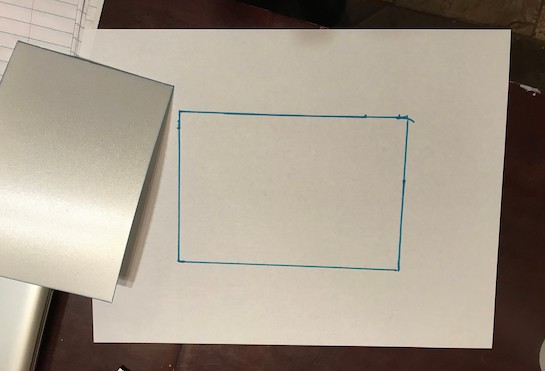
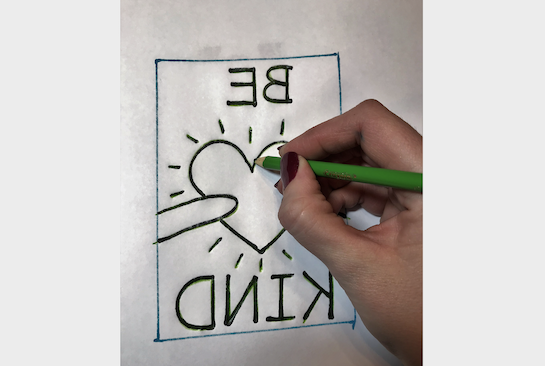

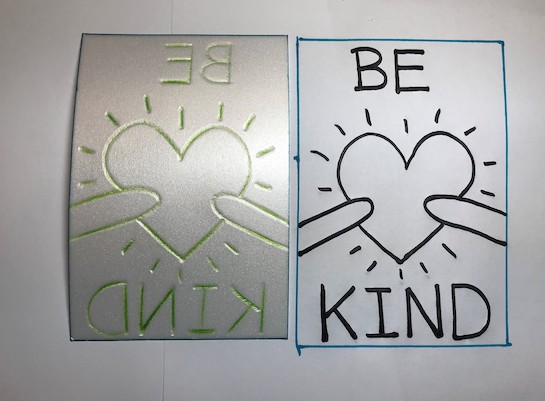

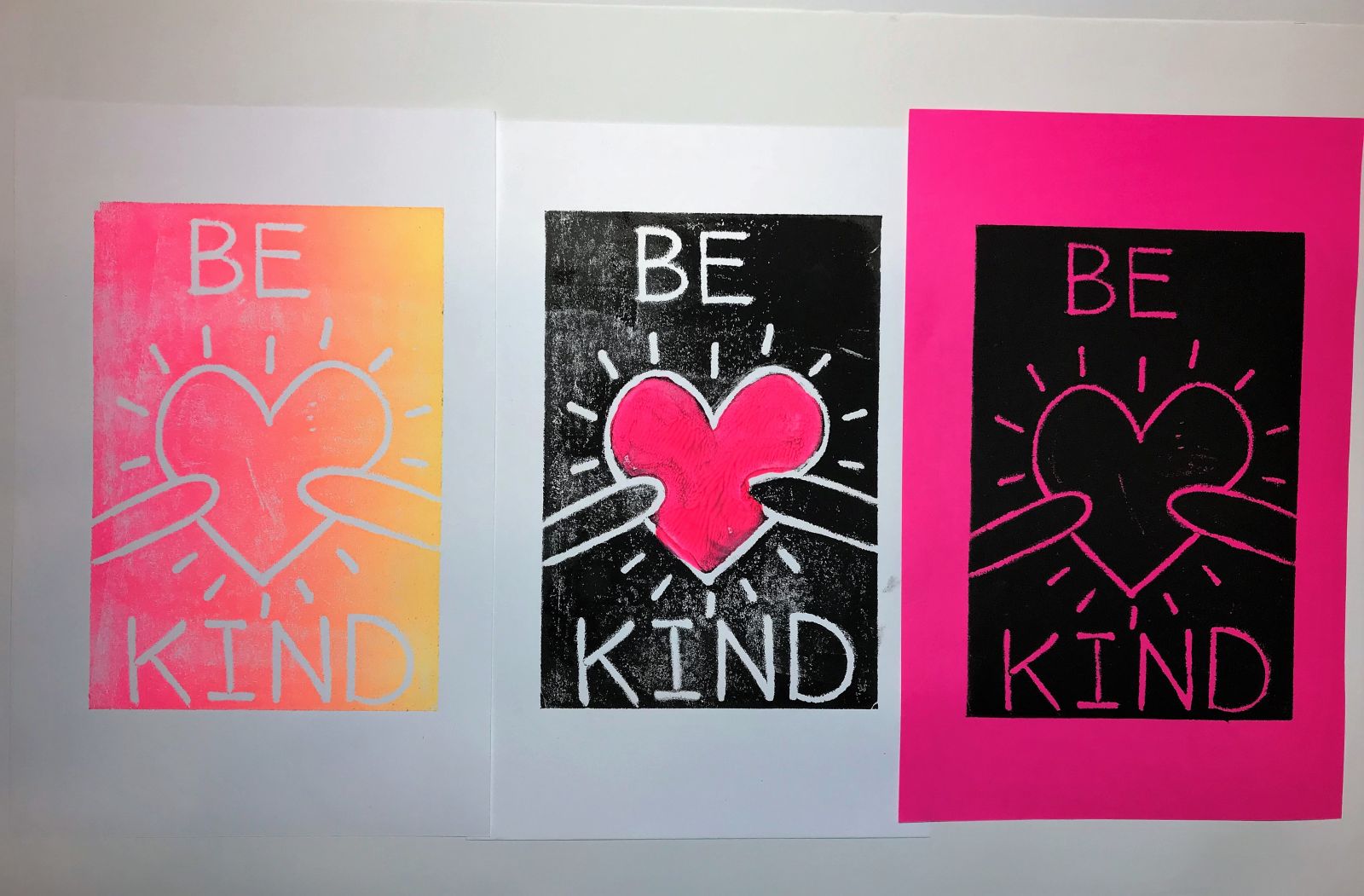
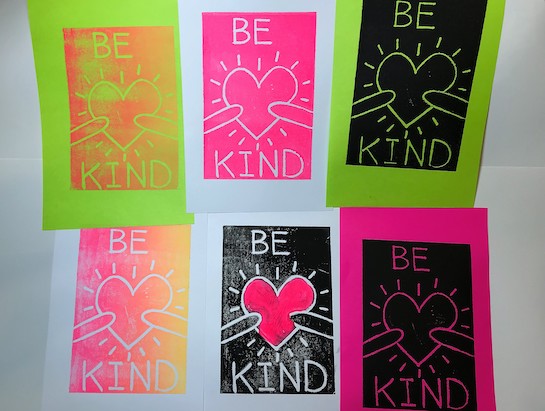

Lesson written by Laurelle Graves.
HaringKids, Keith Haring Foundation.
Keith Haring: The Boy Who Just Kept Drawing by Kay Haring, Penguin Young Readers Group, 2017.
“In His Own Words.” Beginnings | Keith Haring.
21st Century Thinking Skills
Observing, Making Connections, Visualizing, Sequencing, Comparing/Contrasting, Summarizing, Determining Main Idea, Decision Making, Evaluating.
WA State Learning Standards
(VA:Cr1.1.5) a. Combine ideas to generate an innovative idea for art-making.
(VA:Cr1.2.5) a. Identify and demonstrate diverse methods of artistic investigation to choose an approach for beginning a work of art. This happens when exploring Haring’s approach to communicating a message.
(VA:Cr2.1.5) a. Experiment and develop skills in multiple art-making techniques and approaches through practice.
(VA:Cr2.2.5) a. Demonstrate quality craftsmanship through care for and use of materials, tools, and equipment.
(VA:Cr3.1.5) a. Create artist statements using art vocabulary to describe personal choices in art-making. This happens when using vocabulary during group discussions.
(VA:Re7.1.5) a. Compare one's own interpretation of a work of art with the interpretation of others. This happens when sharing opinions and prints.
(VA:Re7.2.5) a. Identify and analyze cultural associations suggested by visual imagery. This happens when exploring symbolism.
(VA:Re8.1.5) a. Interpret art by analyzing characteristics of form and structure, contextual information, subject matter, visual elements, and use of media to identify ideas and mood conveyed.
(VA:Cn11.1.5) a. Identify how art is used to inform or change beliefs, values, or behaviors of an individual or society.
Arts Integration Opportunities
Social studies: research current events, common public symbols. Opinion writing.
Please note: These lesson plans are intended for non-profit use only. Use of these plans for commercial purposes should give attribution to the Issaquah Schools Foundation and be accompanied by a nominal donation at www.isfdn.org/donate. Thank you.
Fueling Success for Every Student, Every School